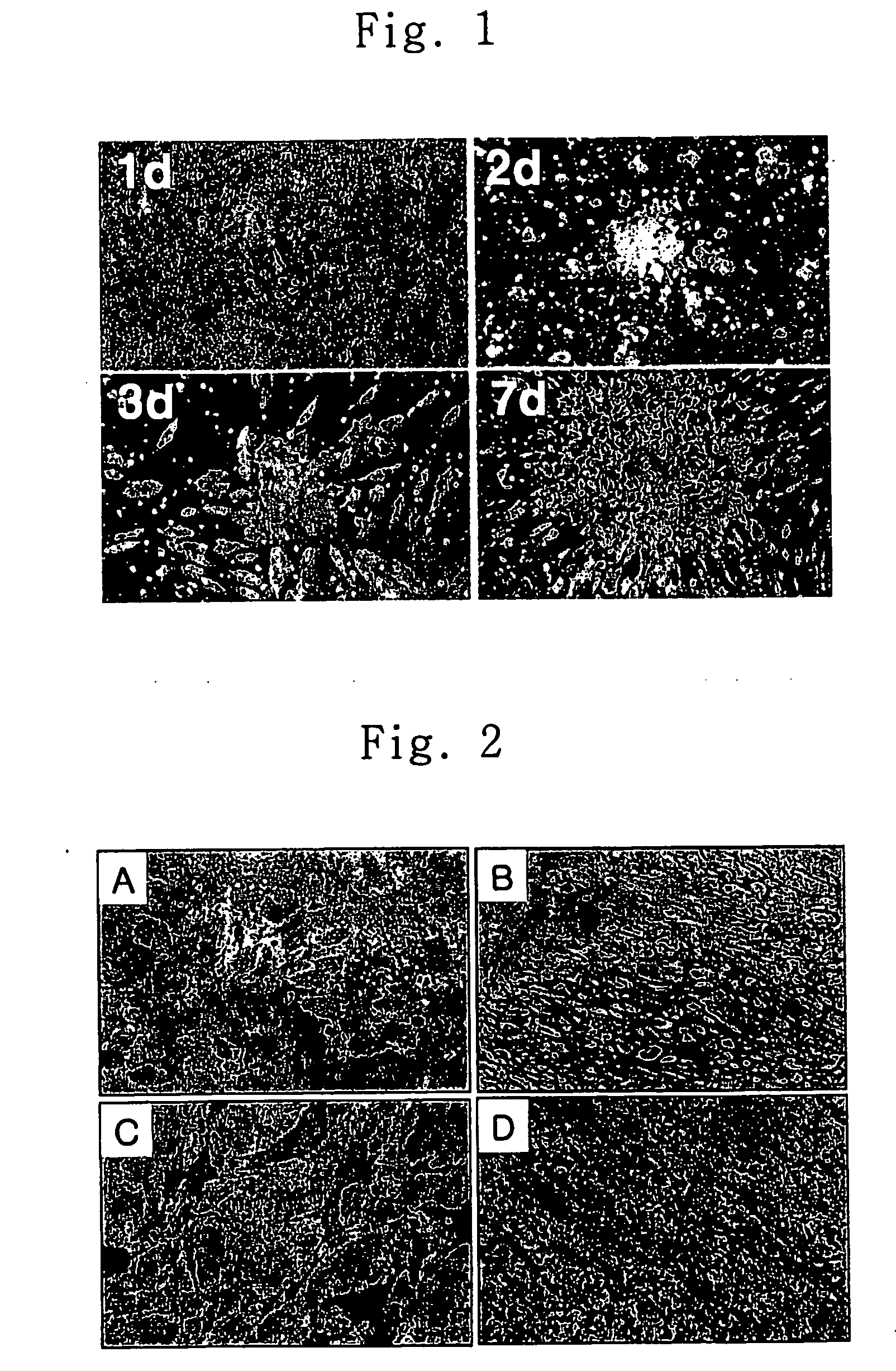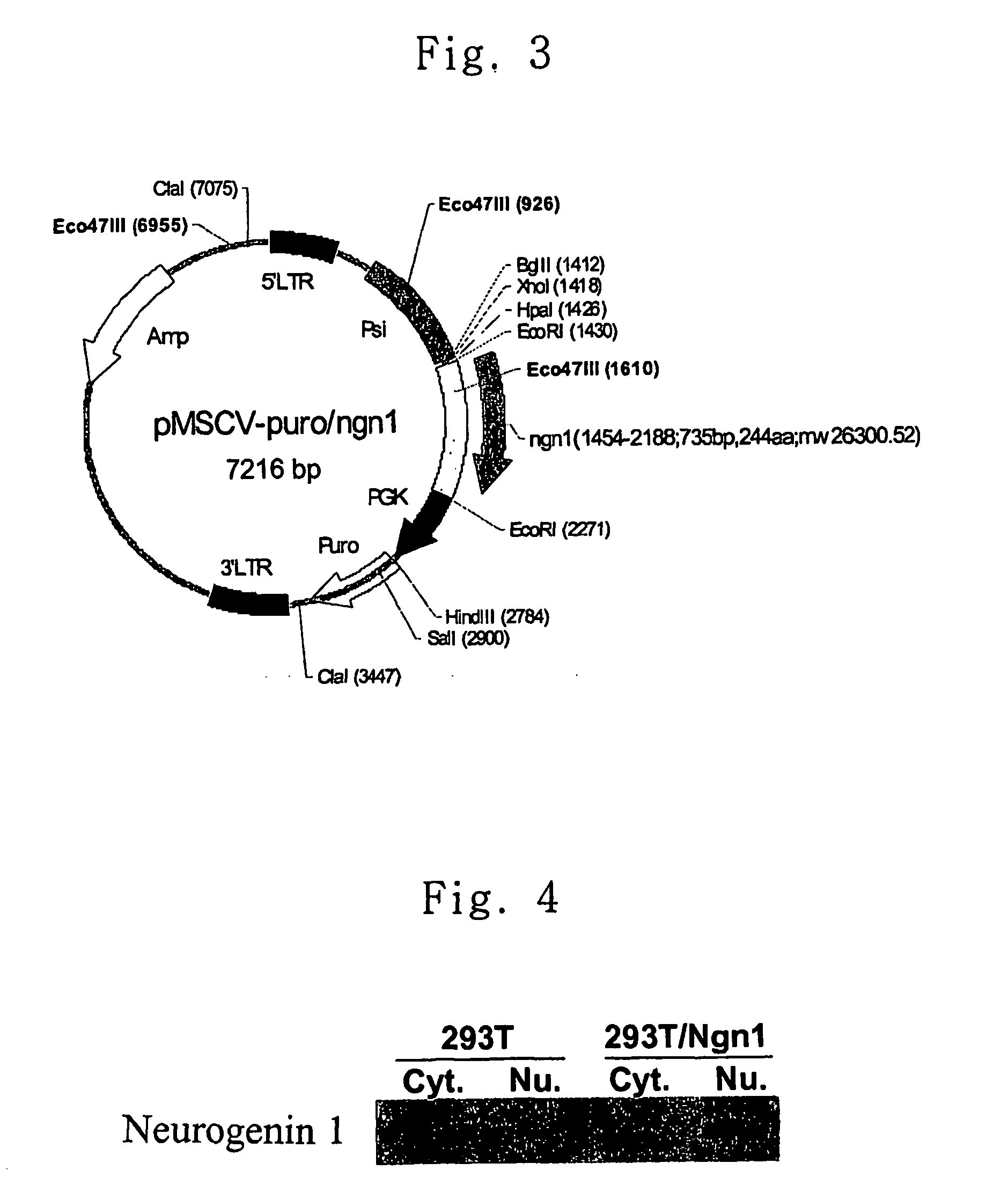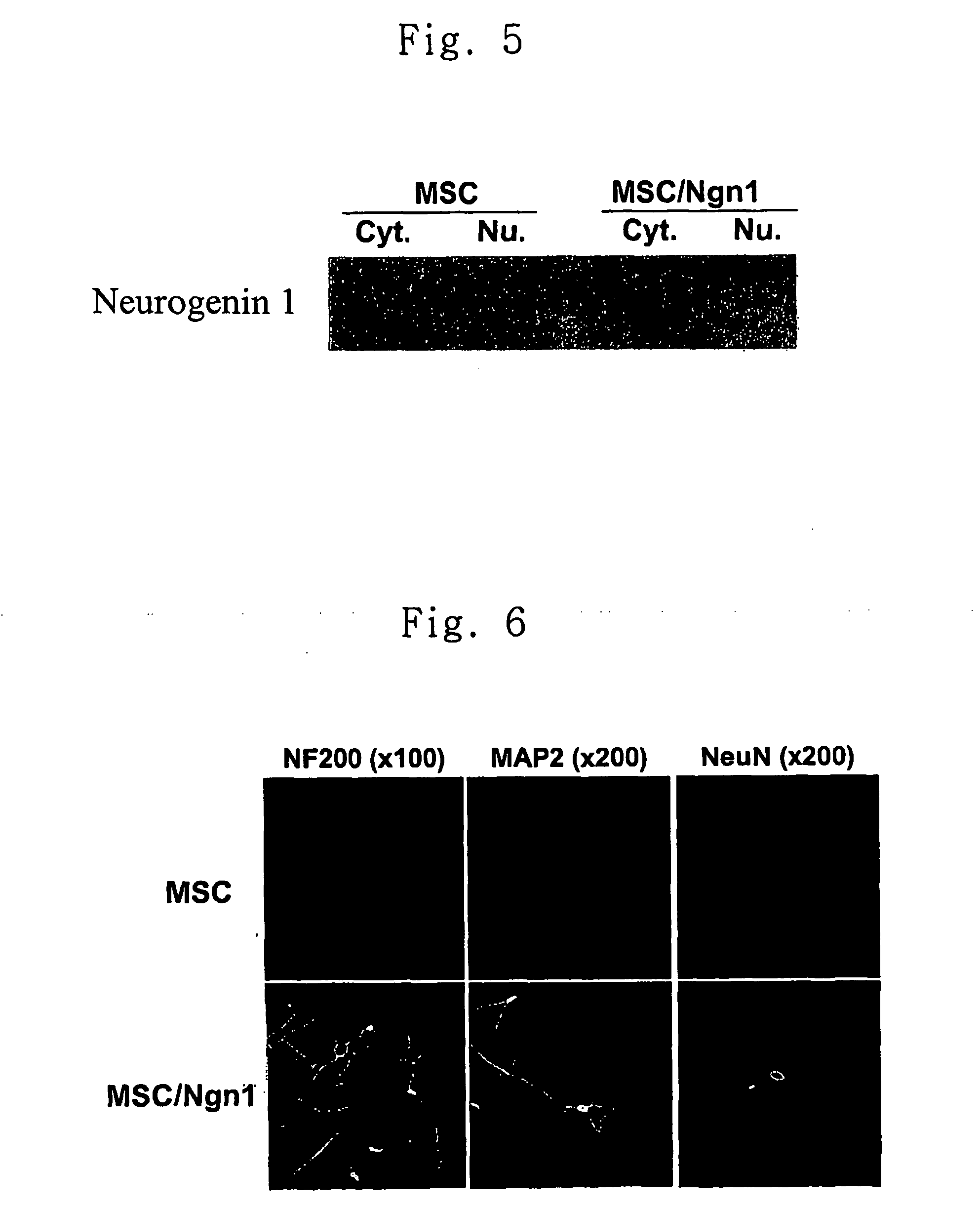Method for transdifferentiating mesenchymal stem cells into neuronal cells
- Summary
- Abstract
- Description
- Claims
- Application Information
AI Technical Summary
Benefits of technology
Problems solved by technology
Method used
Image
Examples
example 1
Isolation and Culture of Mesenchymal Stem Cell
(step 1) Extraction of Bone Marrow and Isolation of Mesenchymal Stem Cells
[0044] 4 ml of HISTOPAQUE 1077 (Sigma) and 4 ml of bone marrow obtained from Bone marrow bank (Korean Marrow Donor Program, KMDP) were added to a sterilized 5 ml test-tube. After centrifugation at 400×g for 30 minutes, 0.5 ml of the buffy coat located in the interphase was collected and transferred into a test-tube containing 10 ml of sterilized phosphate buffered saline. The resulting suspension was centrifuged at 250×g for 10 minutes to remove the supernatant and 10 ml of phosphate buffer was added thereto to obtain a suspension, which was centrifuged at 250×g for 10 minutes. The above procedure was repeated twice and DMEM medium (Gibco) containing 10% FBS (Gibco) was added to the resulting precipitate. A portion of the resulting solution corresponding to 1×107 cells was placed in a 100 mm dish and incubated at 37° C. for 4 hours while supplying 5% CO2 and 95%...
example 2
Construction of a Retroviral Vector Expressing Neurogenin 1, a Neurogenic Transcription Factor
(Step 1) Construction of Retroviral Vector Expressing Neurogenin 1 (Ngn1)
[0053] PCR was carried out using oligonucleotides of SEQ ID NOS.: 1 and 2 as primers and genomic DNA of Balb / c mouse as a template, and the PCR product thus obtained was cloned using TOPO TA cloning kit (Invitrogen). Through sequence analysis of the vector cloned, it was confirmed that the vector contained neurogenin 1 gene. The neurogenin 1 cDNA was isolated with EcoRI and inserted into the EcoRI site of vector pMSCV-puro (Clontech, USA) with T4 DNA ligase (Roche) and transformed into E. coli DH5α to obtain pMSCV-puro / ngn1. The resulting construct of pMSCV-puro / ngn1 is shown in FIG. 3.
(Step 2) Expression of Neurogenin1 Retroviral Vector
[0054] pMSCV-puro / ngn1 vector was transfected into 293T / 17 cell (ATCC CRL-11268) according to the calcium phosphate-coprecipitation method. After 48 hours of transduction, the cel...
example 3
Transduction of Neurogenin1 into MSCs
[0056] MSCs were cultured to 70% confluence in 100 mm dishes. Added thereto was 4 ml of the retrovirus solution obtained in Example 2 which was mixed with polybrene (Sigma) to a final concentration of 8 μg / ml and incubated for 8 hours. The retrovirus solution was then removed, the MSCs were cultured in 10 ml of MSC medium for 24 hours. The above procedure was repeated 1-4 times. Then, MSCs were collected using trypsin and diluted 20 fold with the medium. The obtained cells were subcultured in a medium supplemented with 2 μg / ml of puromycin (Sigma) for 2 weeks. The puromycin positive cells were fractionated into cytoplasm and nucleus. In order to confirm the expression of neurogenin1, each fraction was subjected to western blot analysis using anti-neurogenin1 antibody. The result is shown in FIG. 5. As can be seen in FIG. 5, neurogenin1 protein was expressed in the nucleus of MSCs transduced with Ngn1 gene.
PUM
| Property | Measurement | Unit |
|---|---|---|
| Time | aaaaa | aaaaa |
| Molar density | aaaaa | aaaaa |
| Molar density | aaaaa | aaaaa |
Abstract
Description
Claims
Application Information
 Login to View More
Login to View More - R&D
- Intellectual Property
- Life Sciences
- Materials
- Tech Scout
- Unparalleled Data Quality
- Higher Quality Content
- 60% Fewer Hallucinations
Browse by: Latest US Patents, China's latest patents, Technical Efficacy Thesaurus, Application Domain, Technology Topic, Popular Technical Reports.
© 2025 PatSnap. All rights reserved.Legal|Privacy policy|Modern Slavery Act Transparency Statement|Sitemap|About US| Contact US: help@patsnap.com



